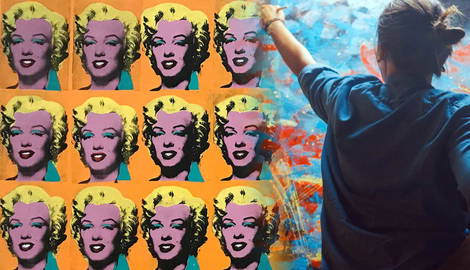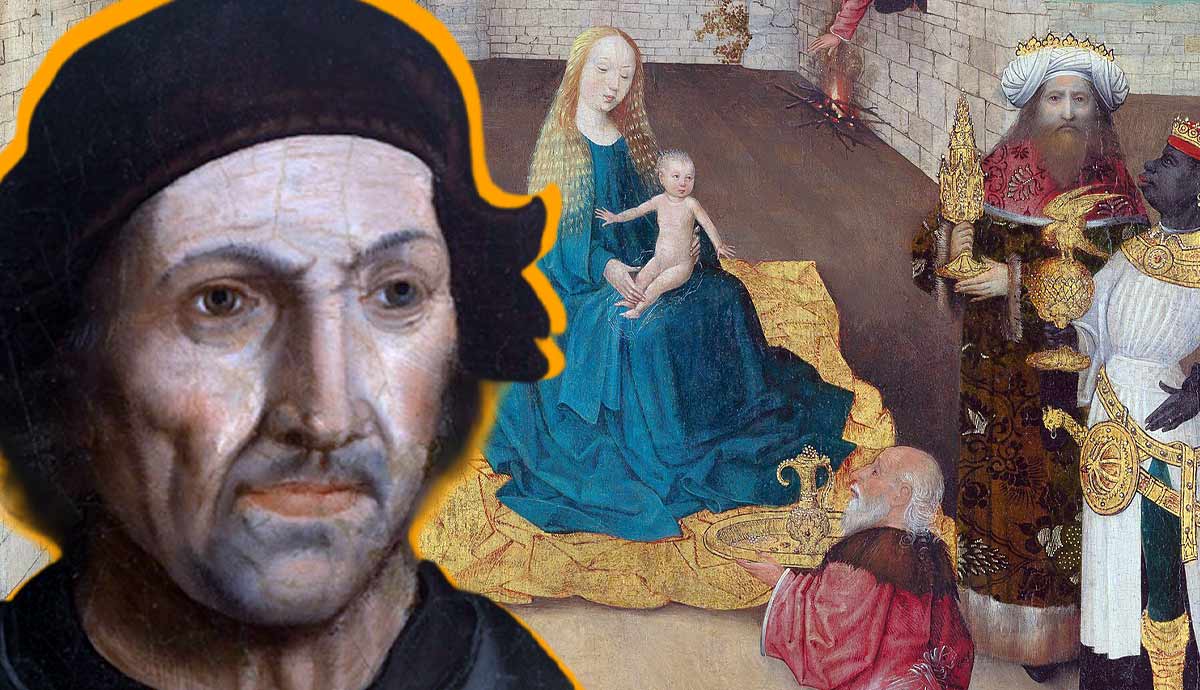
The era of modern art is traditionally defined as the period that started in the 19th century, after a series of revolutions and wars in Europe and America, incredible technological advancement, and the development of urban areas and ways of life. Transformations of modern cities triggered changes in the social structures, routines, and pastimes of those who inhabited them. Visual art, as both a product and transformative factor of human culture, could not remain the same. To reflect the new world, artists started to experiment with materials and art techniques.
1. Collage and Assemblage: Art Techniques of the Cubists

Collage and assemblage were the two techniques of creating works of art from fragments and objects. Collages were usually made with paper of similar flat materials, while assemblages incorporated three-dimensional objects, often not crafted but found or purchased by the artist.
Collage and assemblage techniques became popular first in the Synthetic Cubism movement. Pablo Picasso, Georges Braque, and Juan Gris used cut-out fragments to add visual complexity to the painted images and connect them to the material world. Later, Neo-Dadaists and Pop artists adopted these techniques to explore consumerism and communication through advertisement.
2. Gesture Painting

The term originated from Abstract Expressionism and referred to works created by Jackson Pollock, Lee Krasner, Hans Hofmann, and others. Abstract Expressionist canvases were usually large, with wide sweeping brush strokes. To create such paintings, an artist was supposed to involve their entire body in the work, moving around the canvas and gesturing. Contrary to reserved and careful easel painting, gesture painting was believed to express the inner emotional state of the artist through the movements of the brush.
3. Drip Painting

Another Abstract Expressionist term, the technique of drip painting meant that the artist would literally drip or pour the paint from the can onto the canvas. Before the New York Abstract Expressionist scene, drip painting was used by European artists like Francis Picabia and Max Ernst. Yet, Jackson Pollock became the most famous master of this technique. He suspended paint cans on ropes and flung them over the canvas spread on the floor of the barn where he used to work. According to Pollock experts, he borrowed inspiration for this technique from traditional Navajo sand painting.
4. Divisionism

Divisionism was a technique popular among Post-Impressionist artists that relied on contemporary studies of optics and light. At that time, scientists believed that the human eye composed complex colors from separate fragments of primary-colored fields. Thus, artists attempted to recreate this effect by dividing images into small primary-colored brushstrokes. The artworks by Paul Signac and Georges Seurat were mosaic-like images, where small strokes created the play of light and tone.
5. Impasto

Impasto is a technique of layering paint such as oil or acrylic in thick, textured brush strokes. To enhance the effect, some artists mix sand, sawdust, and other materials into paint to thicken it even more. The impasto technique appeared in art soon after oil paint became the predominant artistic medium. Artists like Rembrandt and Vermeer used impasto to add realistic volume to their portraits by painting textured wrinkles, eyes, and jewelry. In modern art, the impasto technique became a separate expressive instrument used to enhance the dramatism and visual rhythm of abstract compositions.
6. Woodblock Printing

Woodblock printing was not exactly a new technique. Chinese written sources from the 5th century CE already mention it as a developed and popular technique. Japanese artists mastered it around the 12th century, creating complex multi-colored compositions. European masters adopted woodblock prints in the 15th century for book printing, carving both the text and the image into a single block of wood.
However, in the modern era, the technique received a surprising wave of popularity. In 1853, Japan finally opened its borders to Westerners, and European art markets and collections started to amass examples of Japanese fabrics, illustrations, and prints. Their style had little in common with the European pictorial tradition. Many artists, including Claude Monet and Vincent van Gogh, saw them as alternative solutions to the artistic crisis of their time. After the Impressionists, German Expressionist artists started to experiment with woodblock print, attempting to revive the art of the Gothic era. Inspired by heavyweight Gothic art and illuminated manuscripts, they aimed to revive their national heritage.
7. Scraping

Scraping was an unusual technique that became popular in post-war European art. Like with impasto, artists layered thick coats of paint over the canvas. However, instead of leaving it to dry or sculpting it, they scraped it using knives, palettes, or just the back sides of their brushes.
Some artists used this technique to give more texture to their images, while others believed it gave them an extra chance to study the painted subject. Post-war British artist Frank Auerbach was known for painting and scraping off his entire works day after day until he was content enough with his understanding of the scene he painted.
8. Silkscreen Print

Silkscreen printing was an old technique popular in China already in the 10th century. Artists transferred and reproduced preconceived images on various mediums using a stretched piece of silk that allowed the paint to seep through it. Europeans gained access to this technique only in the 18th century, yet it did not gain popularity as silk was too expensive for such projects. The revival of silk screen printing happened in the 1960s when Andy Warhol adopted it for his projects. With the help of his assistants, he created many famous works, including the Marilyn Diptych.
9. Photomontage

Photographers and artists started to experiment with photomontage almost immediately after photography was invented. Initially, photographers overpainted fragments of the images or manipulated developing plates to alter the pictures. In the present-day era, all these manipulations are performed digitally.
Photomontage became particularly popular in the Surrealist movement. Artists eagerly explored new technologies and their possibilities to create illusionistic spaces. Surrealist experiments with photography conducted by women artists were often used for advertising and women’s magazines, launching the genre of commercial and fashion photography.
10. Airbrushing

Airbrush as a tool was invented in the 19th century, but was rarely used as an artist’s instrument until the second half of the 20th century. By using compressed air, the airbrush sprays the paint onto surfaces in a thin and even layer. This way, the artist is able to create subtle and nuanced transitions of color while maintaining a glossy and smooth texture. The airbrushing technique was mostly popular among photorealist artists, who intended to replicate photographic reality as precisely as possible. The famous artist Audrey Flack, ex-Abstract Expressionist turned Photorealist, projected photographic compositions on her easel, and painted over the projected image using regular brushes and airbrush.
11. Readymade

Readymade is an art technique with no technique—it is an act of appropriating an existing object and repurposing it as a work of art. The pioneer of readymade art was Marcel Duchamp, the forerunner of almost every art movement of the 20th century, including conceptual art. Duchamp created artworks from regular objects he purchased in stores, such as a stool and a bicycle wheel. Sometimes, he entirely removed the creative component from the work; this was the case with his famous fountain, which was merely an overturned urinal. Readymades were controversial topics in the contemporary art scene, yet over the years they helped establish the idea that artistic thought was inherently more important than physical involvement.
12. Automatic Drawing: Art Technique From the Spirit World

Originating from the Spiritualist experiments of the late 19th century, automatic writing and drawing were initially used as methods of contacting the spirits of the dead during seances. The medium (usually a woman who claimed she could connect to the realm of spirits) took a pencil and let go of control over her hand movement, scribbling something in a trance state. The resulting words and images were interpreted as messages from the dead. This technique was adopted by early abstract artists who also practiced Spiritualism, like Hilma af Klint. In the 1930s, automatic drawing made a comeback in Surrealist art, this time interpreted as communication with one’s subconscious rather than the supernatural world.










